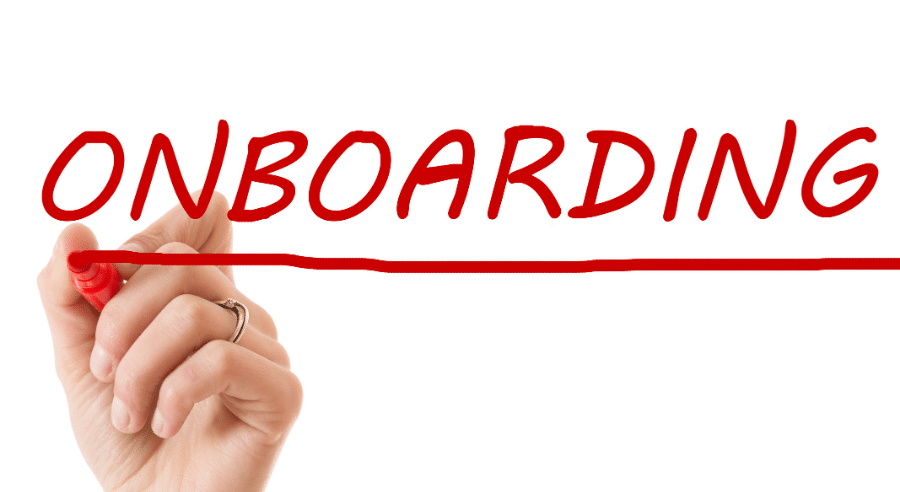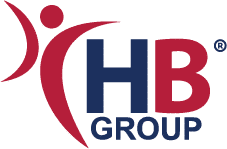What is onboarding?
Onboarding refers to the process of integrating a new employee into an organisation to the point where they become an effective member of that organisation. Many people think of onboarding as the first day induction or orientation but it goes way beyond just getting the necessary documents in order. Successful onboarding includes learning about everything from procedures to job role to culture and continues throughout the employees’ first year with an organisation.
Why is onboarding important?
Successful onboarding benefits both the new employee and the company. Studies have shown that a good onboarding experience leads to employees that are productive much faster and are more likely to stay with the company. Throughout the onboarding process, the new employee will be introduced to their role, their colleagues and to what is expected of them. When onboarding is done well, it can lead to better job performance, increased efficiency and productivity and higher employee satisfaction which in turn leads to lower employee turnover.
Despite the clear benefits of good onboarding, it is often not done well. In this post, we’ve outlined what we believe to be a best practice approach for successful onboarding.
3 stages of successful onboarding
BEFORE THE FIRST DAY
Avoid giving your new employee the impression that you’re disorganised and that you don’t expect they can be productive right away. Set them up for success from the start by ensuring that you’re ready with all that behind-the-scenes stuff.
- Office key / ID card / swipe card
- Desk, computer, tablet, phone, headset etc
- Company email / login
- Add to group calendars, mailing lists, group chats etc
- Hardware & software logins
- Specialist tools and equipment
- Uniforms and personalised name tags
- Order business cards
- Prepare welcome package
- Organise welcome coffee or lunch
Speak to the new employee’s team leader or a colleague to find out what you might not have thought of; they’ll have the best idea of what logins and equipment will be required.
The paperwork is the most boring and tedious part; try to get it out of the way quickly and efficiently. Before they start, email your new employee:
- Letter of Offer
- Employment Contract
- Policies that need to be signed – consider using electronic acceptance to speed up the process and create a great first impression
- Payroll & personal details forms (including Tax Declaration & Superannuation Fund Choice Forms)
It’s also a good idea to confirm their Work rights status and organise any medicals, police and working with children checks at this time.
Successful onboarding is as much about integrating the new employee into the team as it is about getting all the HR documents in order.
Email your existing employees:
- The new employees’ name, job title and department
- The new employees’ start date, time and work location
- Share a bit of background on the new employee i.e. work experience, education, skills and interests
- Invite existing employees to attend welcome coffee / lunch for the new employee
ON THE FIRST DAY
First days, and weeks, can often be overwhelming even for the most confident people. Having a plan and incorporating some fun can take the pressure off. Have someone own the orientation experience, this person will show them around and lead them through their first day.
- Immerse your new employee in company culture with a fun office tour; welcome coffee/lunch; welcome gift; and communicate any upcoming events.
- Ensure all the HR documents have been completed and returned
- Meeting with a CEO to give a brief company history and discuss the company’s mission, vision and values and explain how the new employee fits in with the bigger picture.
- Meeting with employee’s manager who will go over the job description; explain expectations; set goals for the first few months; and discuss the career development plan.
Try not to overwhelm your new employee with information. For best retention, give information slowly as it becomes relevant. To be able to do this well, you might need to take some time before they start to define the core steps that they will take moving from being a new employee to a productive team member.
AFTER THE FIRST DAY
First week
- Check in with the new employee daily
- Schedule regular meetings
- Schedule intro meetings with different teams
- Organise and schedule software training
- Organise and schedule other necessary training
- Recommend useful reading
- Organise social activities and gatherings
Over the next 6 months
- Seek feedback from the new employee on the onboarding process for the purpose of Continuous Improvement
- Set performance goals that can be monitored and evaluated
- Schedule regular probation check-ins. The frequency of these will depend largely on the size of your company; the key is to make sure that your new employee feels supported without them check-ins being so often that they’re onerous
- Discuss any further opportunities for professional development and schedule relevant training
- Organise social activities and gatherings
- First anniversary
o Celebrate the milestone
o Prepare and conduct the 12 month performance / remuneration review
o Ask the new employee for feedback on their first year with your company


